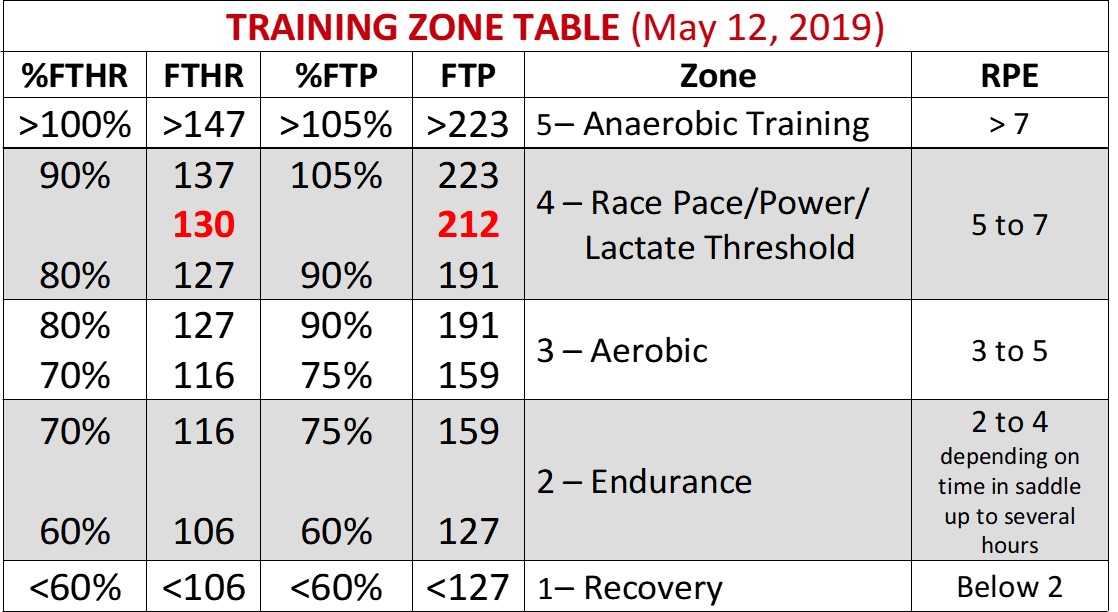Tip #19: How important is your lactate threshold?
Obesity levels for the senior population in the U.S. are now over 40 percent. If you are a former high school/college/post-college athlete who has been on the couch for the past 20-30+ years, this series of twice-monthly (1st and 15th of the month) tips will show you how to resume an active lifestyle.
Fortunately, numerous studies have confirmed that it is never too late to resume an active lifestyle. I will show you how to reduce your fitness age, a more reliable indicator of longevity than your BMI, by 20+ years over the next 12-24 months. You will definitely be healthier, happier, and an inspiration for your family, friends, and colleagues. What’s better than that?
How important is your lactate threshold?
The following table shows my functional threshold heart rate (FTHR) and functional threshold power (FTP) in the five zones based on one of my recent VO2max tests. My FTHR is 143 bpm; my FTP is 130 watts. These numbers have been validated repeatedly in races over the past several seasons.
 The FTP numbers, on the left two columns of the Training Zone Table above, were determined with a self-administered FTP test. You can perform this test on your trainer with some method of recording watts during the test. I’ve used a Wahoo Fitness Kickr power trainer, though, there are similar (and cheaper) power trainers available. You can also install crank arms or pedals with power meters embedded that can communicate with a bike computer or smartphone. Unfortunately, power meters are expensive. My power trainer cost roughly $1,100. The Garmin Vector 3 power pedals that I have on my race bike cost me another $1,000.
The FTP numbers, on the left two columns of the Training Zone Table above, were determined with a self-administered FTP test. You can perform this test on your trainer with some method of recording watts during the test. I’ve used a Wahoo Fitness Kickr power trainer, though, there are similar (and cheaper) power trainers available. You can also install crank arms or pedals with power meters embedded that can communicate with a bike computer or smartphone. Unfortunately, power meters are expensive. My power trainer cost roughly $1,100. The Garmin Vector 3 power pedals that I have on my race bike cost me another $1,000.
The real value of knowing your power numbers is that they are much more precise than relying on heart rate when training and racing.
What have I learned?
0:00 – Endurance Pace Warmup
0:20 – Fast Pedaling (100 rpm cadence)
0:21 – Recovery
0:22 – Fast Pedaling (100 rpm cadence)
0:23 – Recovery
0:24 – Fast Pedaling (100 rpm cadence)
0:25 – Recovery
0:30 – 5-Minute Maximum Effort
0:35 – Recovery
0:45 – 20-Minute Time Trial Effort
1:05 – Cooldown
1:20 – End
Any questions?
Tip #20 Preview: Do you really need a training diary?
